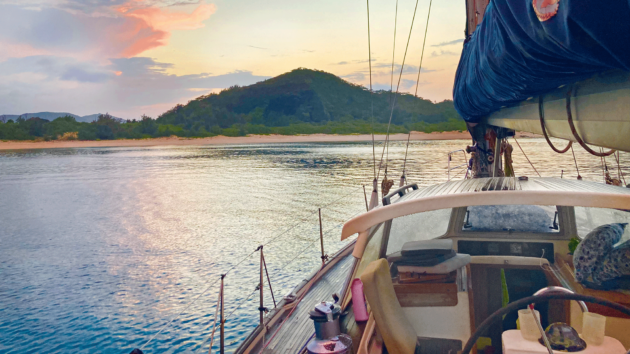Embarking on a journey through Japan by sea offers an experience like no other, seamlessly blending the nation’s deep historical roots with its dynamic urban life. Cruising around Japan’s coastline provides a unique vantage point for discovering ancient temples, feudal castles, scenic countryside, and neon-lit cityscapes—all in one itinerary. With each port of call, travelers gain a deeper appreciation for the culture, cuisine, and traditions that make Japan a destination of endless fascination.
The cruise begins not with a single destination, but with a journey through centuries of history and culture. Japan’s port cities were once bustling trade hubs that connected the country to the rest of Asia and the world. Today, these cities continue to thrive, combining their rich heritage with modern amenities, welcoming visitors from around the globe with a sense of both tradition and innovation.
One of the most common starting points for such a voyage is Yokohama, just south of Tokyo. As Japan’s second-largest city and a historic gateway to international commerce, Yokohama offers a preview of what to expect throughout the trip. Visitors can explore the Yamate district, home to European-style architecture from the 19th century, and stroll through Sankeien Garden, a stunning example of Japanese landscape design. The port itself is modern and efficient, making it an ideal embarkation point for a cruise around Japan.
Sailing south, the ship might dock in Shimizu, a city that boasts some of the best views of Mount Fuji. Beyond the majestic volcano, Shimizu also offers cultural sites like the Kunozan Toshogu Shrine and Nihondaira Plateau. For travelers who crave a blend of natural beauty and historical significance, this stop is a perfect example of what a Japan cruise can provide.
Further along the coast, Kobe offers a taste of both history and gastronomy. Known internationally for its world-renowned beef, Kobe also played a pivotal role in Japan’s opening to the West in the 19th century. The Kitano district showcases Western-style houses once inhabited by foreign merchants and diplomats, while the waterfront Meriken Park is home to the Kobe Maritime Museum and the poignant Earthquake Memorial.
Not far from Kobe lies Osaka, a lively metropolis that blends contemporary energy with historical intrigue. A short train ride from the port will take visitors to Osaka Castle, one of Japan’s most iconic landmarks. The Dotonbori district, with its vibrant signage, street food stalls, and canal views, captures the essence of Osaka’s outgoing personality. Whether you’re indulging in takoyaki (octopus balls) or browsing high-end boutiques, Osaka never fails to impress.
Heading further west, Hiroshima provides a more contemplative experience. As the site of one of the most significant events in world history, Hiroshima’s Peace Memorial Park and Museum serve as solemn reminders of the past, while also promoting hope and peace for the future. Nearby Miyajima Island, accessible by a short ferry ride, features the iconic “floating” torii gate of Itsukushima Shrine—an image that graces many postcards and travel guides for good reason.
Cruising the Sea of Japan leads to Kanazawa, often referred to as “Little Kyoto” for its well-preserved Edo-period districts, traditional crafts, and beautiful gardens. Kenrokuen Garden, one of Japan’s top three landscape gardens, is a must-see, especially in the spring when cherry blossoms are in bloom. The city is also a center for gold leaf production, and visitors can try their hand at applying this delicate material during a hands-on workshop.
As the cruise rounds the northern coast and heads back down the Pacific side, a stop in Hakodate, on the southern tip of Hokkaido, offers a blend of natural beauty and historical architecture. The star-shaped Goryokaku Fort and the bustling morning seafood market provide a glimpse into Hakodate’s unique blend of cultures and its role as one of Japan’s first international ports in the 19th century.
Throughout the journey, passengers on a Japan cruise are treated not just to scenic views and cultural landmarks, but also to world-class dining experiences on board. Japanese cuisine is celebrated worldwide, and enjoying it while gliding past mountain-lined shores or bustling harbors adds an unforgettable layer to each meal. From fresh sushi and sashimi to regional specialties such as Hiroshima-style okonomiyaki or Kanazawa’s seafood rice bowls, every stop brings new flavors to savor.
What makes cruising through Japan especially appealing is the effortless movement between locations. Instead of hauling luggage between trains or navigating language barriers at every hotel check-in, guests can settle into their floating home while the country unfolds before them, one port at a time. The ship serves as both a luxurious retreat and a moving window into Japan’s multifaceted charm.
Each port along the route is distinct, yet together they form a cohesive story—a narrative of resilience, creativity, and beauty. Whether you’re an avid history buff, a food lover, or someone simply seeking an immersive cultural experience, sailing through Japan offers a well-balanced itinerary that reveals the country’s heart in a way few other travel methods can.
As the final port nears and the cruise winds down, travelers often find themselves reflecting not just on the sights they’ve seen, but on the connections they’ve made—with the people, the culture, and the spirit of Japan itself. From the quiet reverence of ancient temples to the buzzing energy of city streets, the journey leaves lasting impressions and a yearning to return.
Exploring Japan by sea is more than just a vacation; it’s a cultural odyssey that invites you to experience the country’s contrasts and harmonies at a pace that allows for reflection, discovery, and joy.

